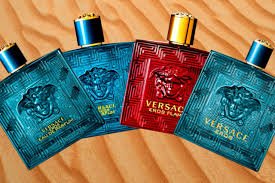
Diamond Tester
What Is a Diamond Tester and Why Does It Matter?
A diamond tester is a small, handheld device used to determine whether a gemstone is a real diamond or a simulant. With the increasing popularity of diamond jewellery and the growing market for synthetic or imitation stones, having a reliable tool to verify authenticity has become essential. Jewelers, pawn shop owners, and even individual buyers use diamond testers to ensure they are dealing with genuine materials. The tester works by measuring thermal or electrical conductivity, depending on the model. Since real diamonds conduct heat and electricity differently from other stones, a diamond tester can distinguish between a natural diamond, a moissanite, cubic zirconia, or glass. This tool provides peace of mind and protects consumers from counterfeit gems
How Does a Diamond Tester Work?
Most diamond testers operate by detecting thermal conductivity, while some advanced models also test electrical conductivity to differentiate between diamonds and similar-looking stones such as moissanite. When the device’s probe touches the gemstone, it measures how quickly heat passes through the stone. Because diamonds are excellent heat conductors, the reading confirms whether the stone is authentic. Moissanite, although visually similar to diamonds, also has high thermal conductivity, which is why some testers now include electrical testing to improve accuracy. The latest devices combine both methods to deliver the most reliable results. A multi-tester is ideal for professional use, offering dual-mode verification with clear LED indicators or digital displays. Understanding how these testers work is crucial for anyone involved in buying, selling, or appraising gemstones
Types of Diamond Testers
There are several types of diamond testers available in the market, each designed for different levels of expertise and usage. Thermal testers are the most common and affordable. They are ideal for beginners or casual use, and work well in distinguishing diamonds from most fakes except moissanite. Electrical conductivity testers, also called moissanite testers, focus specifically on separating diamonds from moissanite, which thermal testers sometimes misidentify. Multi-testers combine both technologies, providing the highest level of accuracy and are the preferred choice of professional jewellers. Some models are battery-powered and portable, while others are designed for use in a static environment such as a workshop or retail store. When choosing the right type, consider how often you’ll use the device and what types of stones you intend to test
Key Features to Look for in a Quality Diamond Tester
If you’re considering buying a diamond tester, it’s important to look for certain features to ensure you’re getting a reliable and effective tool. Firstly, accuracy is paramount. Choose a tester that offers both thermal and electrical conductivity testing to reduce false positives, especially with moissanite. Secondly, ease of use matters: look for a model with a clear display, audible alerts, and an intuitive interface. A digital diamond tester provides better readability than an analogue one. Portability is also useful—battery-powered, compact designs are ideal for on-the-go use. A built-in calibration system helps maintain testing consistency, especially when moving between different environments. Finally, ensure the product is durable, preferably with a protective case, and backed by a manufacturer’s warranty. Investing in a well-reviewed and reputable model will save you time and reduce the risk of misidentifying stones
Who Uses Diamond Testers and Why?
Diamond testers are used by a wide range of people, from professional jewellers to casual collectors. Retail jewellers use them to verify inventory and reassure customers of a product’s authenticity. Pawn shop owners rely on testers to appraise jewellery items accurately before purchase. Gemstone dealers and appraisers use high-end testers to certify stones during transactions. For individuals, a diamond tester is a valuable tool when buying second-hand jewellery, especially in private sales or online markets where authenticity is not guaranteed. Some people even keep a tester at home for fun or curiosity, especially if they collect rings, earrings, or inherited heirlooms. Regardless of the setting, the use of a diamond tester adds a layer of trust and professionalism to any transaction involving gemstones
Common Diamond Simulants and How Testers Identify Them
Several stones closely resemble diamonds but are chemically and physically different. The most common simulants include cubic zirconia, moissanite, white sapphire, and glass. Diamond testers are designed to separate these fakes based on how they conduct heat and electricity. Cubic zirconia, for example, has very low thermal conductivity, making it easy for a standard thermal tester to identify. Moissanite, however, is trickier due to its high thermal conductivity—almost as high as diamond. That’s why a tester with electrical conductivity capability is crucial. White sapphires and glass generally do not conduct heat well and are easily filtered out with basic testers. If your diamond tester has both thermal and electrical testing features, it will accurately detect and separate even the closest visual matches to real diamonds
Limitations of Diamond Testers
While diamond testers are incredibly useful, they do have limitations. The most notable is the inability of basic thermal testers to distinguish between diamonds and moissanite. That’s why dual-function or multi-testers are considered more reliable. Additionally, testers can give false readings if the stone is dirty, wet, or loose in its setting. It’s important to ensure the stone is clean and dry before testing. Extreme temperatures can also affect test accuracy, especially in portable models. Furthermore, diamond testers cannot determine a diamond’s clarity, cut quality, or origin (natural vs. lab-grown)—for that, one must refer to a GIA certificate or laboratory appraisal. In short, a diamond tester confirms authenticity, not value, and should be used alongside other gemological tools for a full assessment
How to Use a Diamond Tester Properly
Using a diamond tester correctly ensures accurate results. First, turn on the device and allow it to calibrate (most models will indicate when they’re ready). Hold the gemstone securely or place the item on a stable surface. Gently touch the probe to the stone’s top surface without pressing too hard. Wait for the result—this is usually displayed through LED lights or a digital screen, and often accompanied by a sound signal. If the result is inconclusive, clean the stone and test again. For best accuracy, avoid testing stones that are loose or mounted near metal, as this can interfere with readings. Refer to your tester’s manual for guidance, especially if you are using an advanced model
Choosing the Best Diamond Tester for Your Needs
When choosing the best diamond tester, you need to balance functionality, price, and accuracy. If you are a professional, a dual-mode tester with both thermal and electrical capabilities is ideal. Popular and reliable brands include Presidium, Gemlogis, and Diamond Selector II. If you’re a casual user or a first-time buyer, a basic thermal tester may suffice, especially if you just want to test family jewellery or a few personal items. Make sure to read reviews, check for calibration certificates, and compare warranty policies. Many reputable retailers offer starter kits that include the tester, replacement probes, batteries, and protective cases—an excellent option if you’re just starting out
Conclusion: Why Every Buyer and Seller Needs a Diamond Tester
In today’s jewellery market, where fakes and simulants are more convincing than ever, owning a diamond tester has become a necessity rather than a luxury. Whether you’re a seasoned jeweller or simply someone purchasing an engagement ring, having the means to confirm the authenticity of a stone protects your investment and builds confidence. These devices are compact, affordable, and surprisingly accurate when used correctly. They help you avoid scams, assess second-hand purchases, and even explore your existing collection. As diamond testing technology continues to advance, the devices are becoming more user-friendly and precise. Investing in a high-quality diamond tester ensures that you never have to guess whether your gem is real—it gives you proof, on the spot






